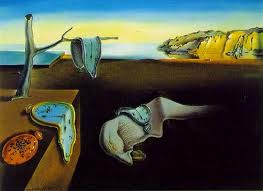 |
Craig White's Literature Courses Terms / Themes Phantasmagoric Style |
 |
Phantasmagoric Style is a provisional term for a writing or artistic style that combines qualities of dream-like hallucination, surrealism, shape-shifting, illusion, free association, trance, fantasy, and personal or esoteric symbolism.
OED 1.a. An exhibition of optical illusions produced chiefly by the use of a magic lantern, first exhibited in London in 1802 (now hist.); any optical exhibition, esp. one in which preternatural phenomena are represented using artificial light; an apparatus for creating such illusions.
An entertainment called a fantasmagorie, featuring projections of figures which moved or changed shape rapidly (often accompanied by sound effects), was presented in Paris by Étienne-Gaspard Robertson in 1798. A similar ‘Phantasmagoria’ was presented in London in 1802 by Paul de Philipstal, a Parisian showman, and was widely imitated; such entertainments became very popular in England during the early 19th cent.
Fantasmagorie images
|
|
|
>
2. (A vision of) a rapidly transforming collection or series of imaginary (and usually fantastic) forms, such as may be experienced in a dream or fevered state, or evoked by literary description.
3. A shifting and changing scene consisting of many elements, esp. one that is startling or extraordinary, or resembling or reminiscent of a dream, hallucination, etc.
Painting titled Phantasmagoria

Four "Surrealistic" works by Salvador Dali (Spain, 1904-89)
 |
 |
 |
 |
![]()
—x
[ ]x

